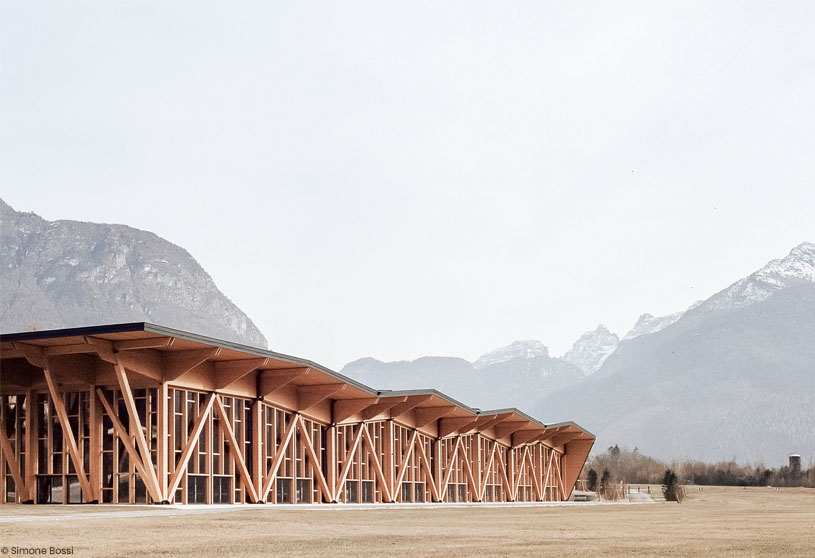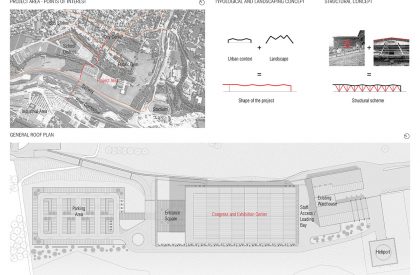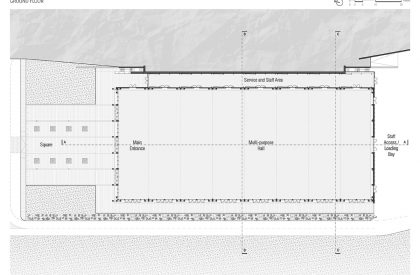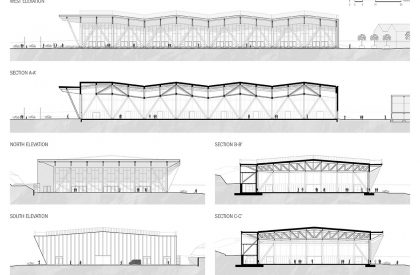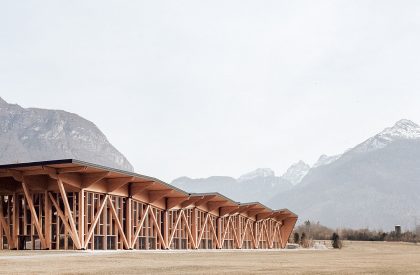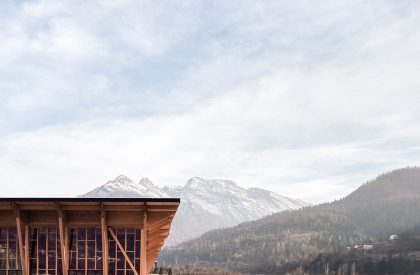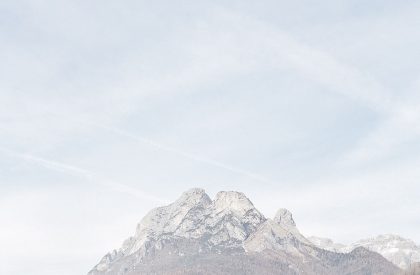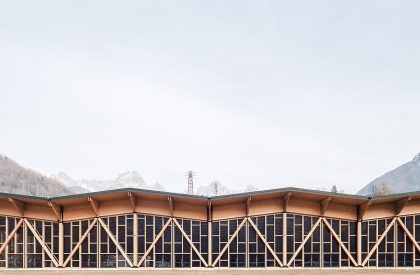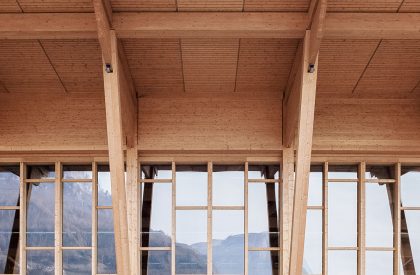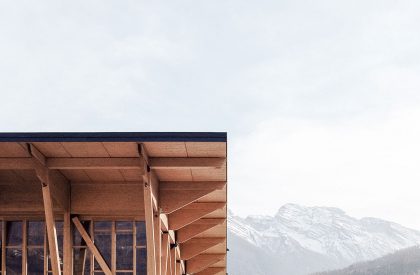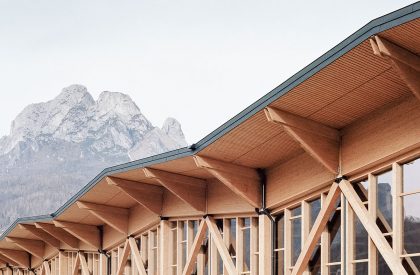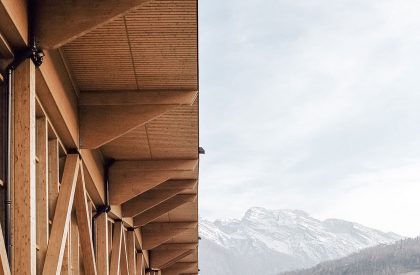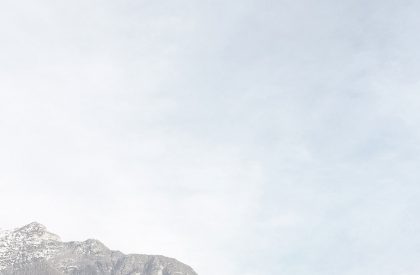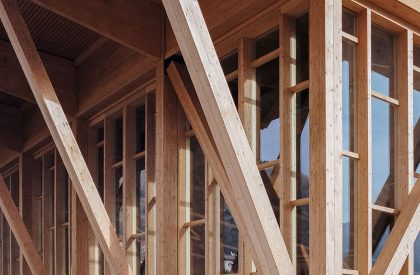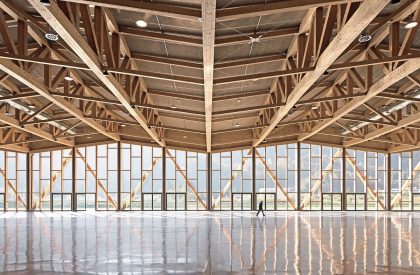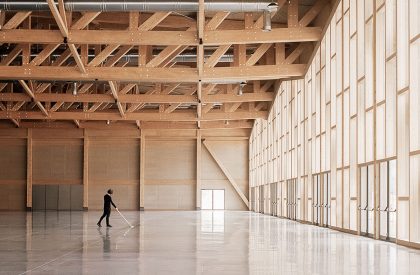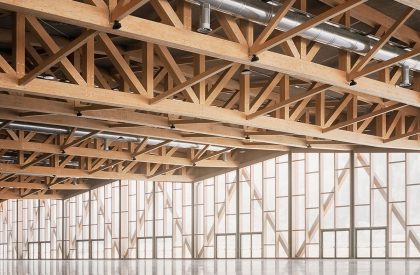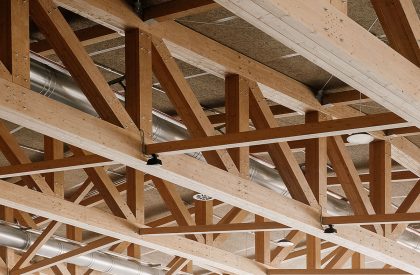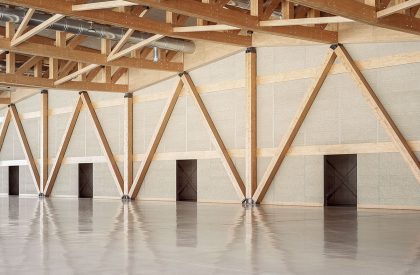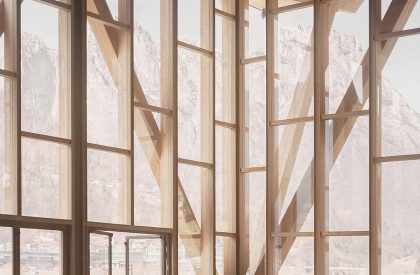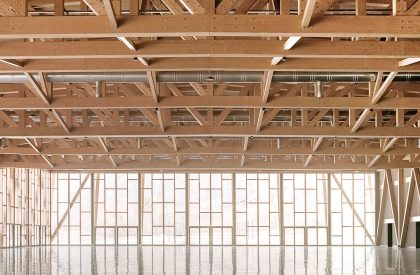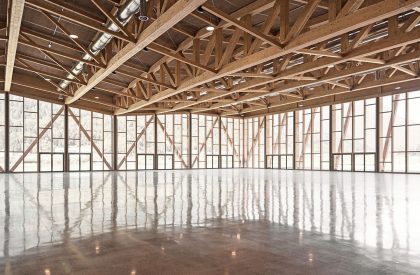Excerpt: Congress and Exhibition Center designed by Studio Bressan & Studio Botter looks at Agordo’s typical landscape and urban morphology to create a new language. The structure is characterized by a repeated pitched roof which draws a recognizable sign through the landscape from South to North. The complex has been designed taking inspiration from the typical constructions of the agordinian Valleys (tabià), with wooden frame and cross bracing elements.
Project Description
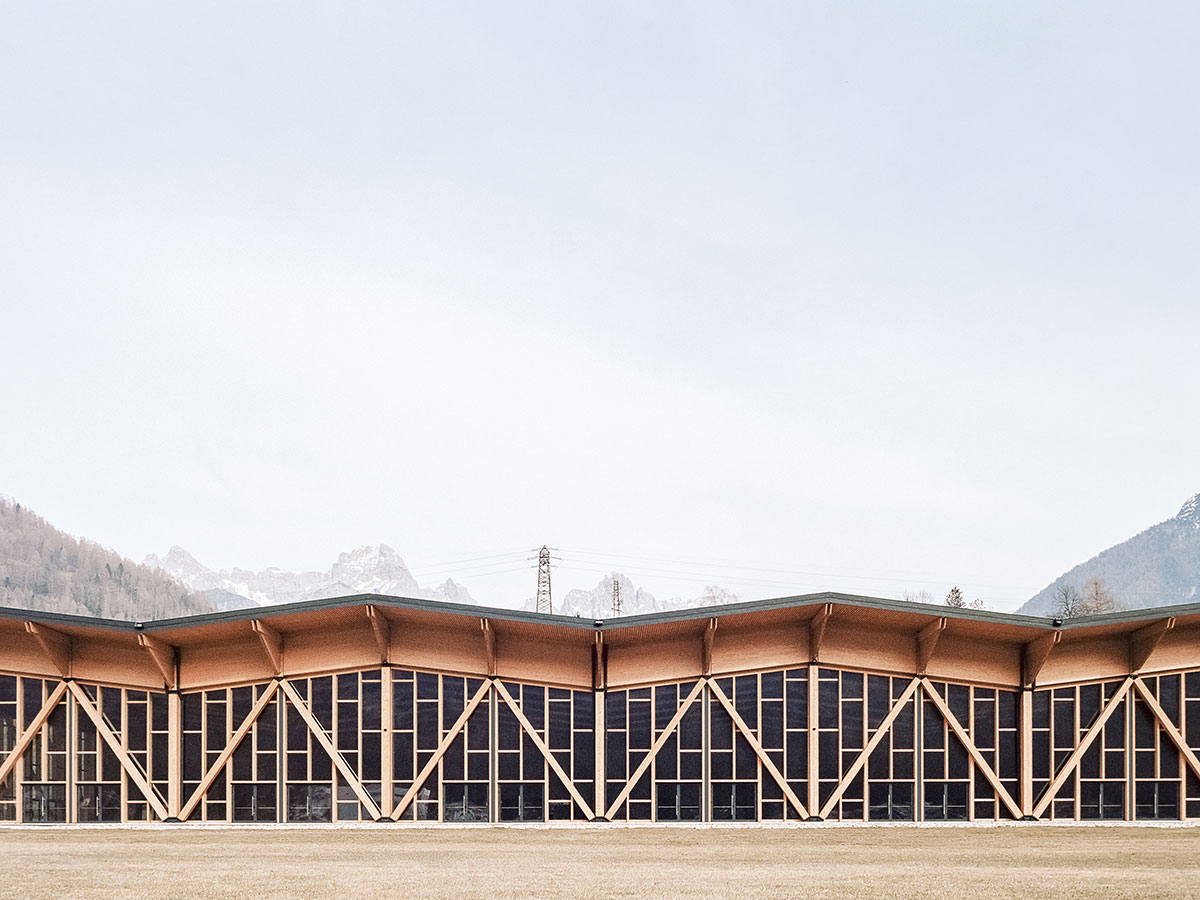
[Text as submitted by architect] The project is situated in a green area outside the city center, in an alpine landscape featured by well recognizable natural and anthropic signs. Although positioned outside the urban settlement, it has a strong strategic nature and it’s well connected to the public network (schools, leisure centers, and infrastructures).
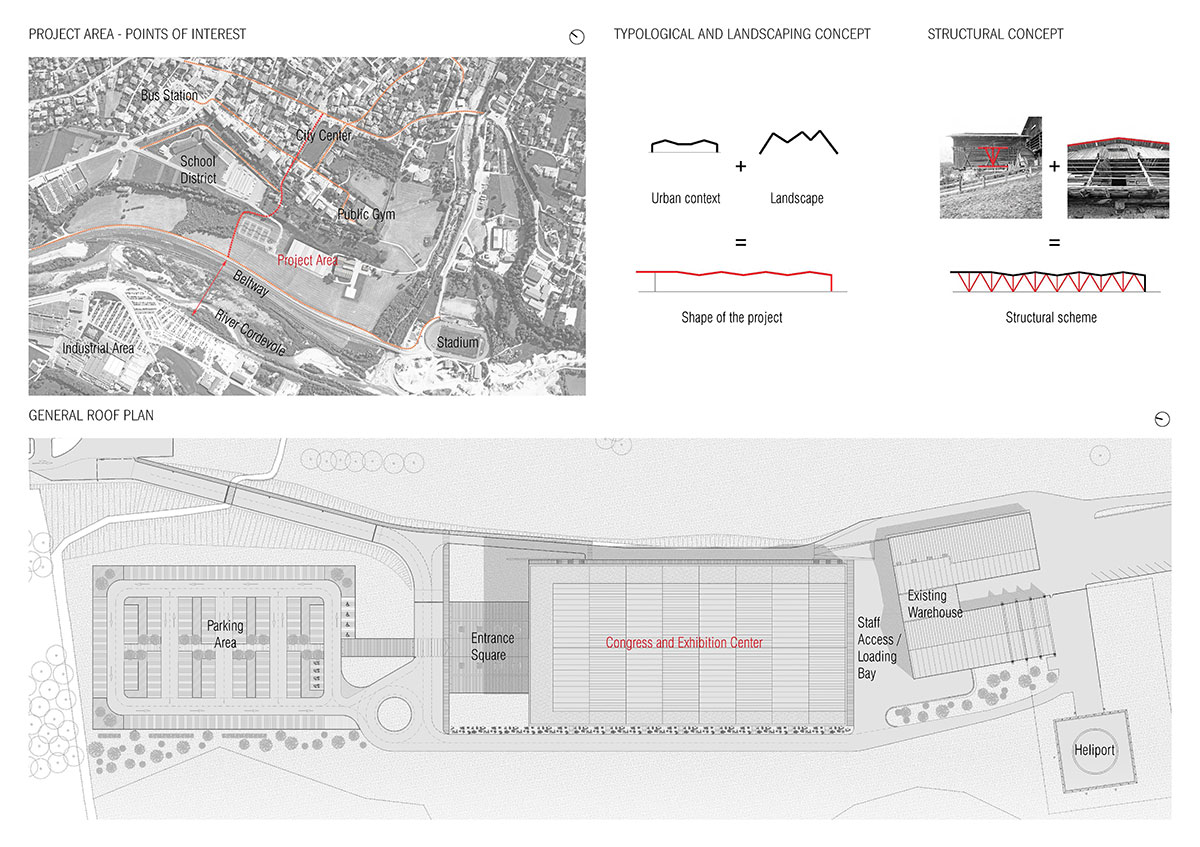
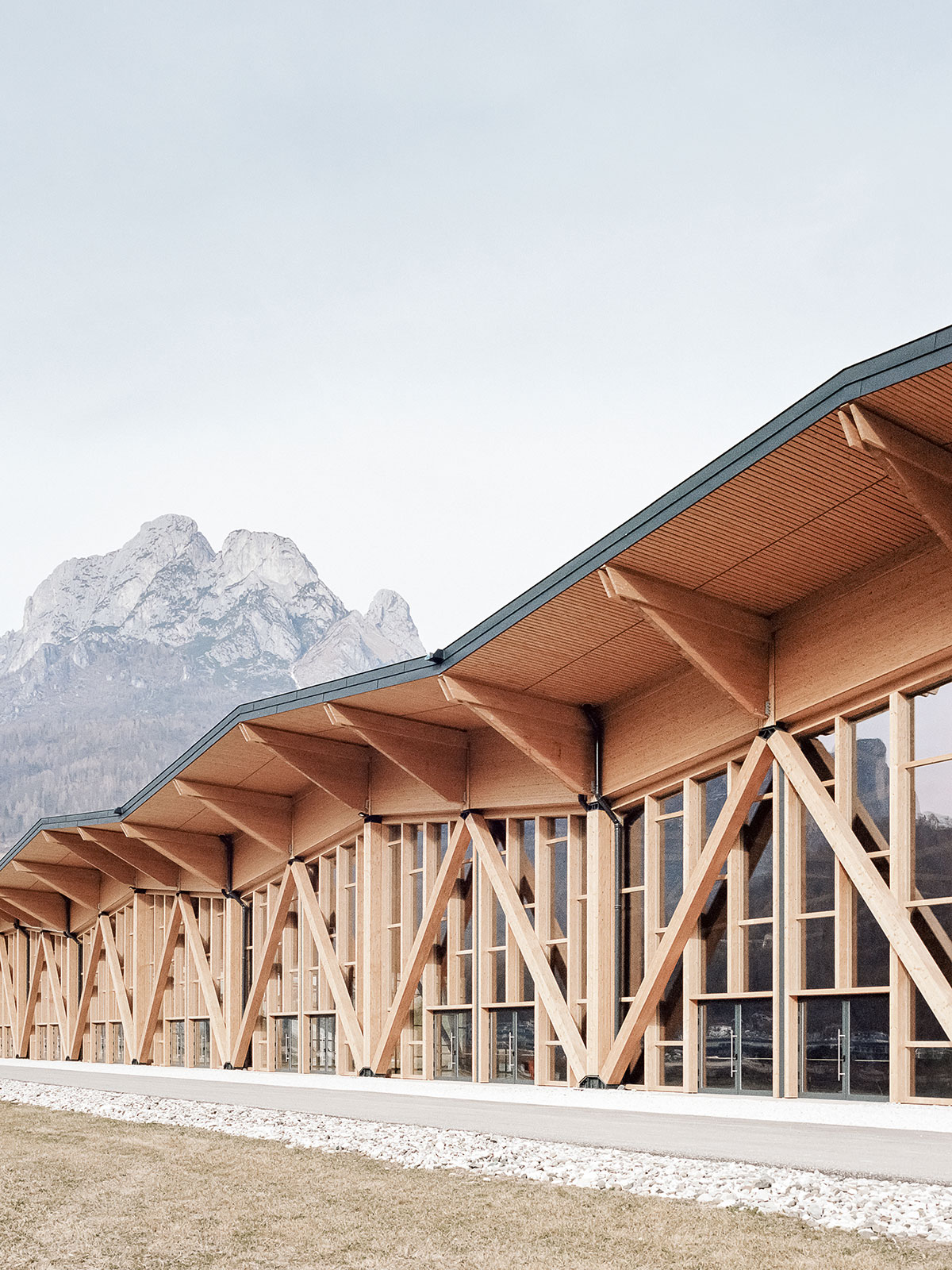
The building hosts several different functions, like get-together activities for the local community, shows and entertainment. It will be used for concerts, theatrical performances, conventions, conferences, art exhibitions and expos.
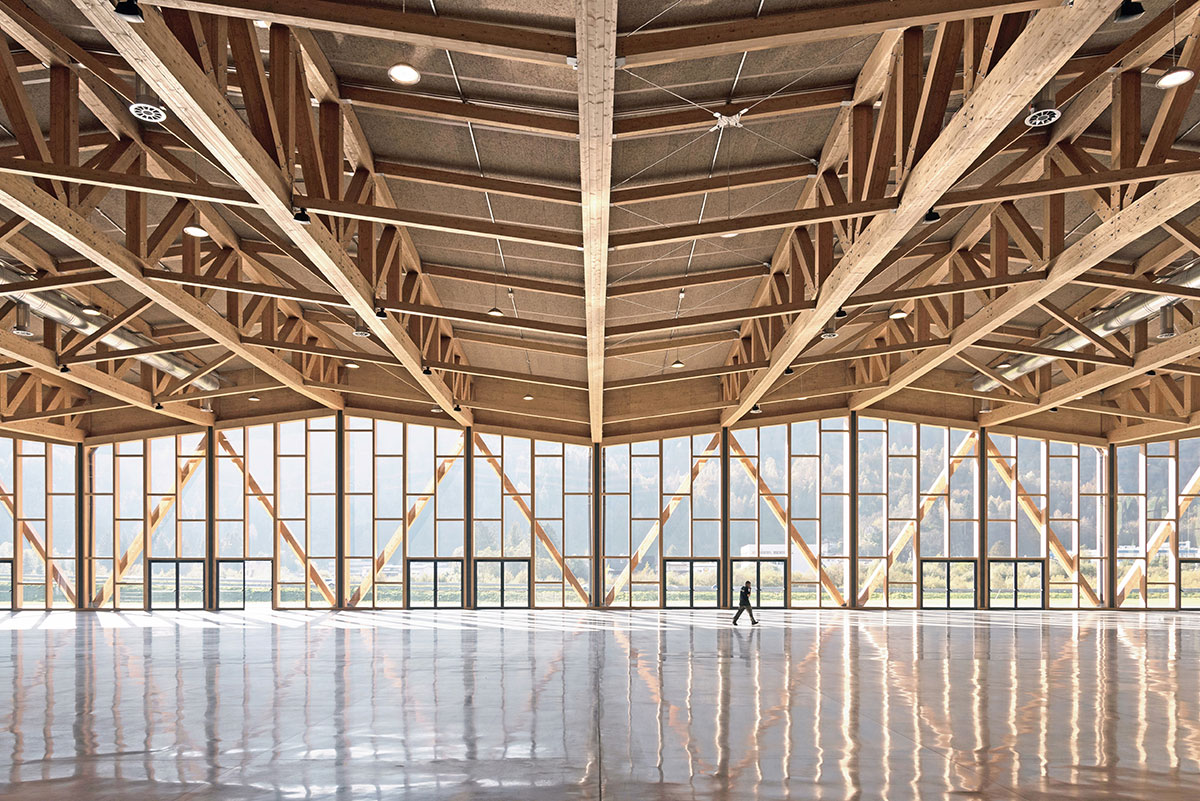
The project looks at Agordo’s typical landscape and urban morphology to create a new language. The structure is characterized by a repeated pitched roof which draws a recognizable sign through the landscape from South to North.
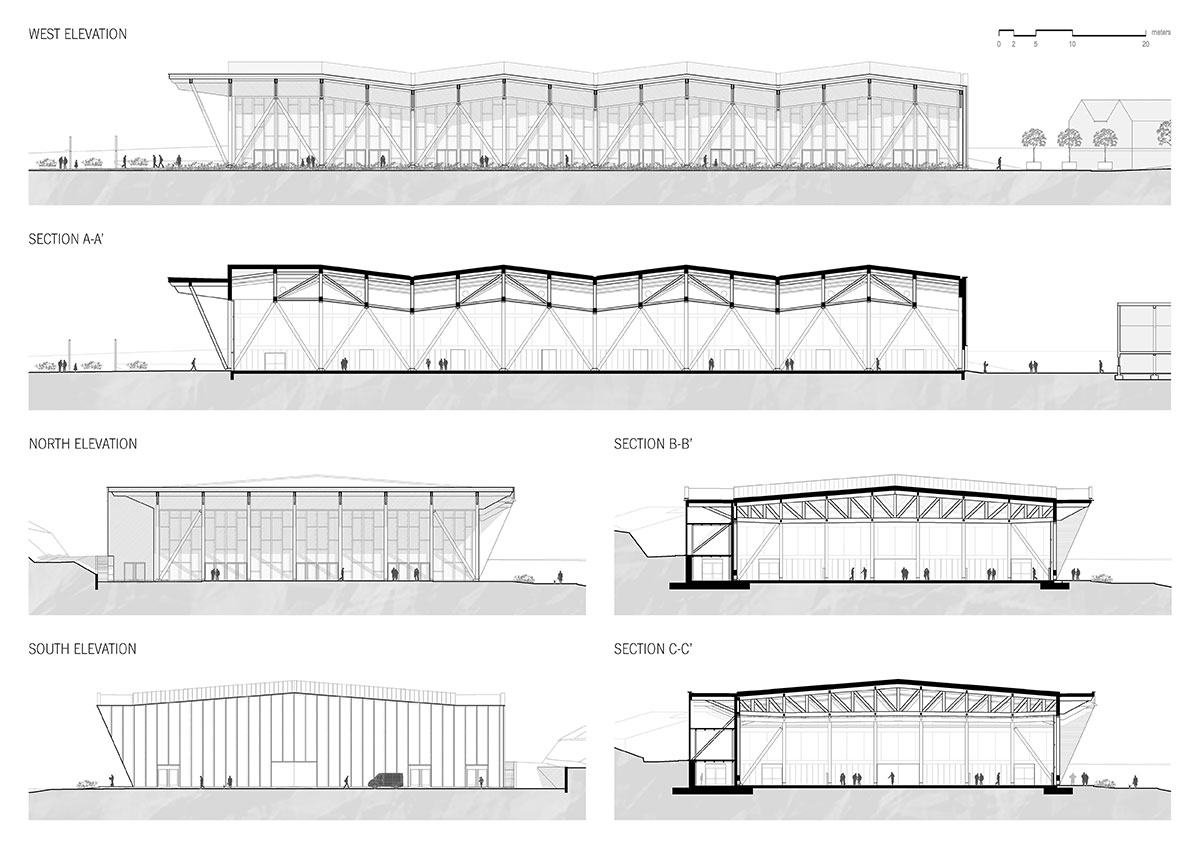
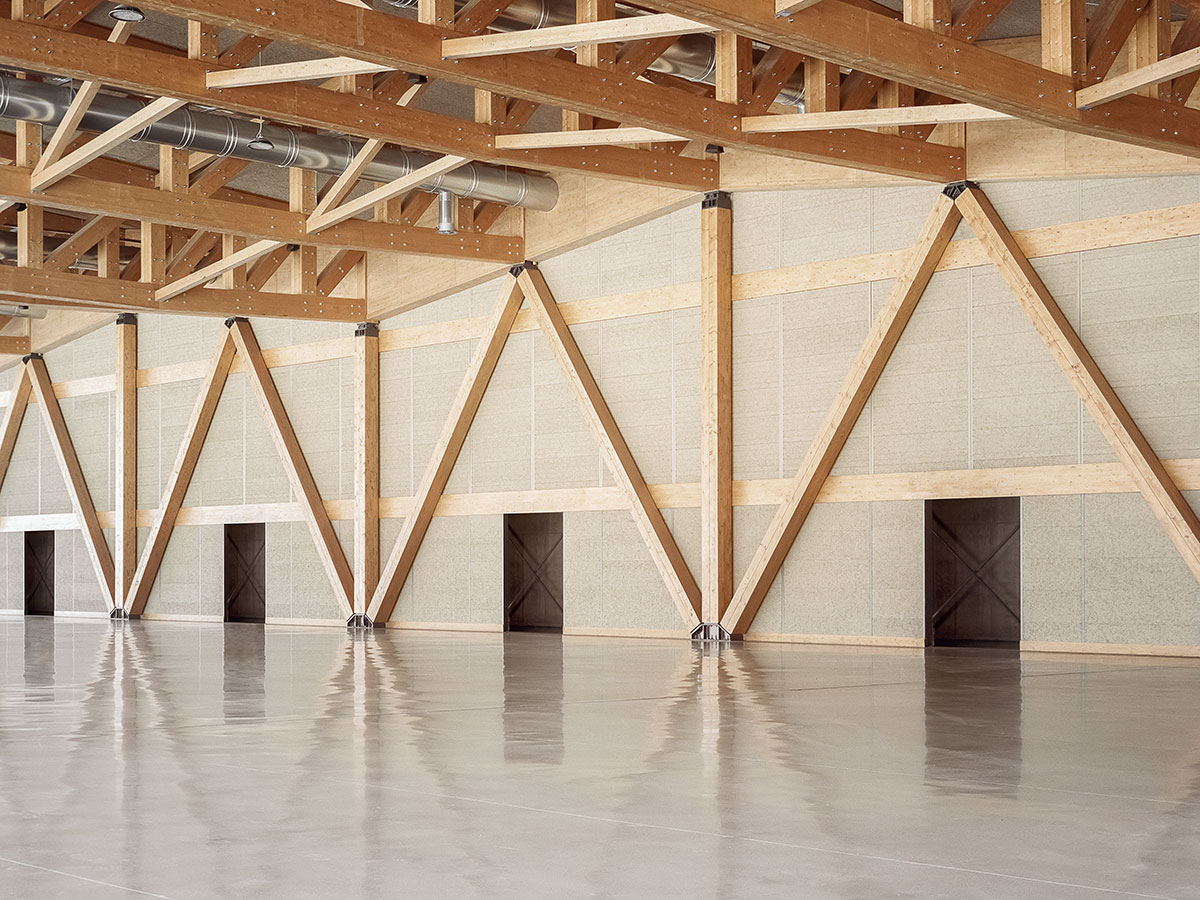
The complex has been designed taking inspiration from the typical constructions of the agordinian Valleys (tabià), with wooden frame and cross bracing elements. The supporting structure has been conceived in timber, both for environmental compatibility and consistency with the Alpine building tradition, from which it draws inspiration.
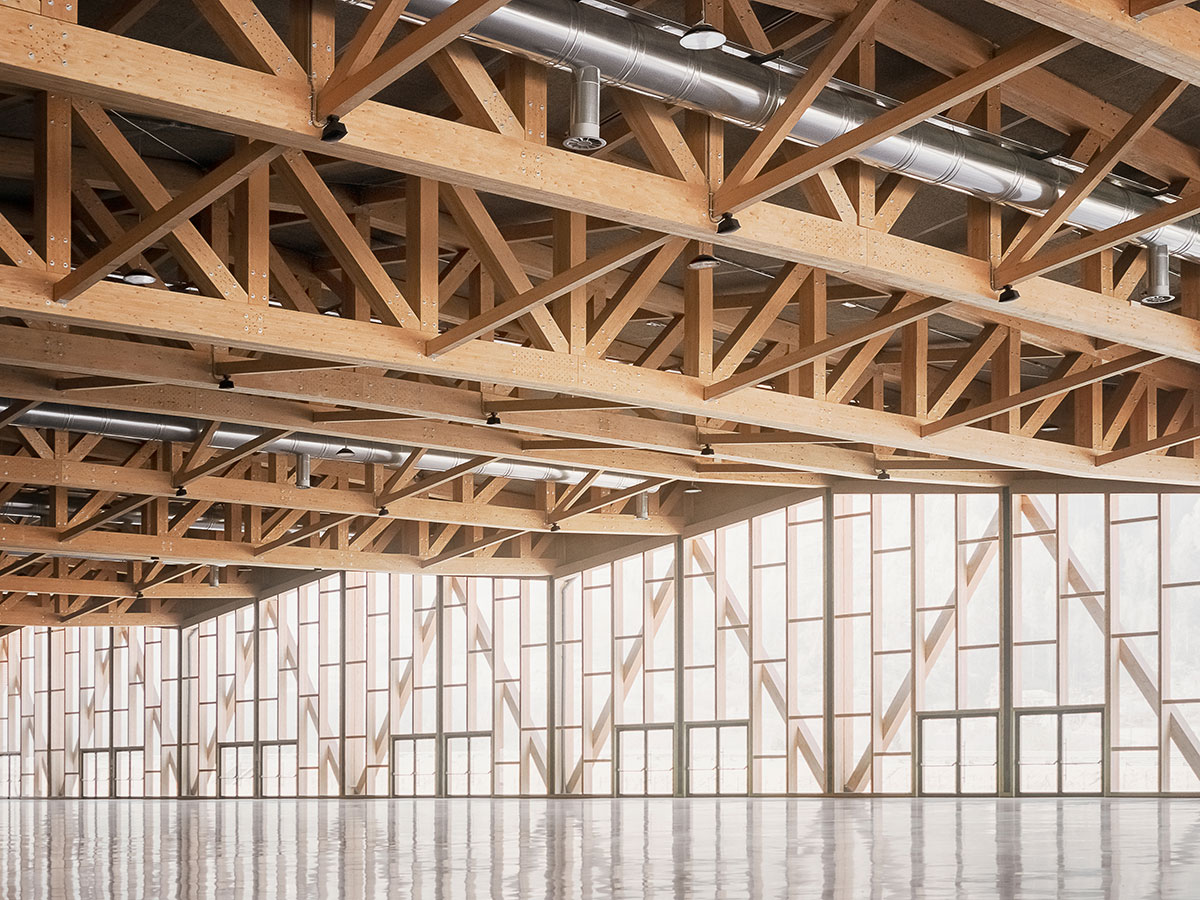
The North and West facades are designed to be large clear glass curtain walls facing to the landscape, in order to allow the contemplation of the mountains from the main hall. The East and South elevations are instead blind and oriented respectively towards a sloping green area and the loading bay.
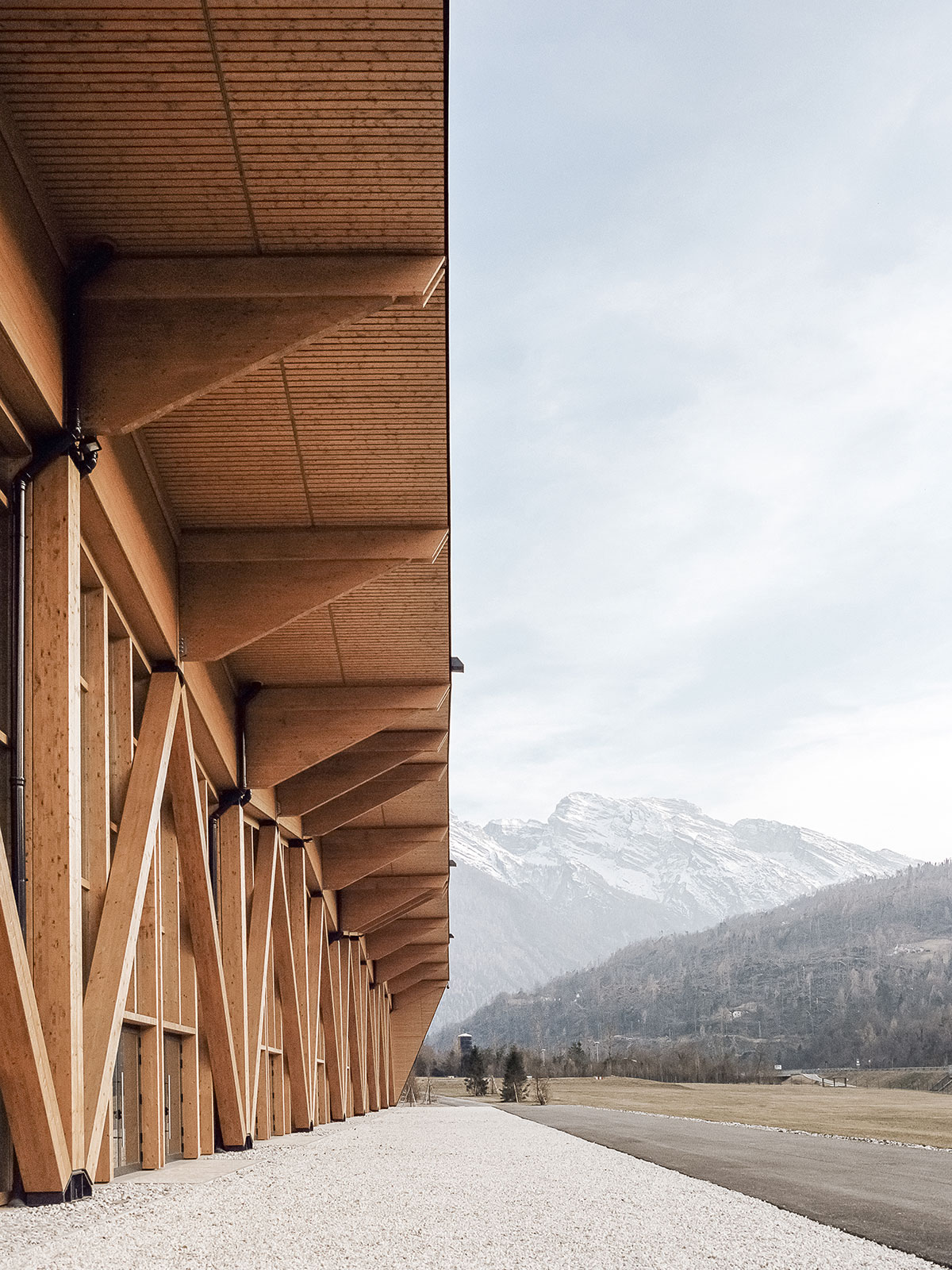
The large cantilevered roof over the glass curtain walls protects visitors’ entrances and wooden structures from atmospheric agents. It also shields the main hall from direct sun during the summer period and lets solar intake during winter months, in order to reduce costs of cooling and heating ventilation.
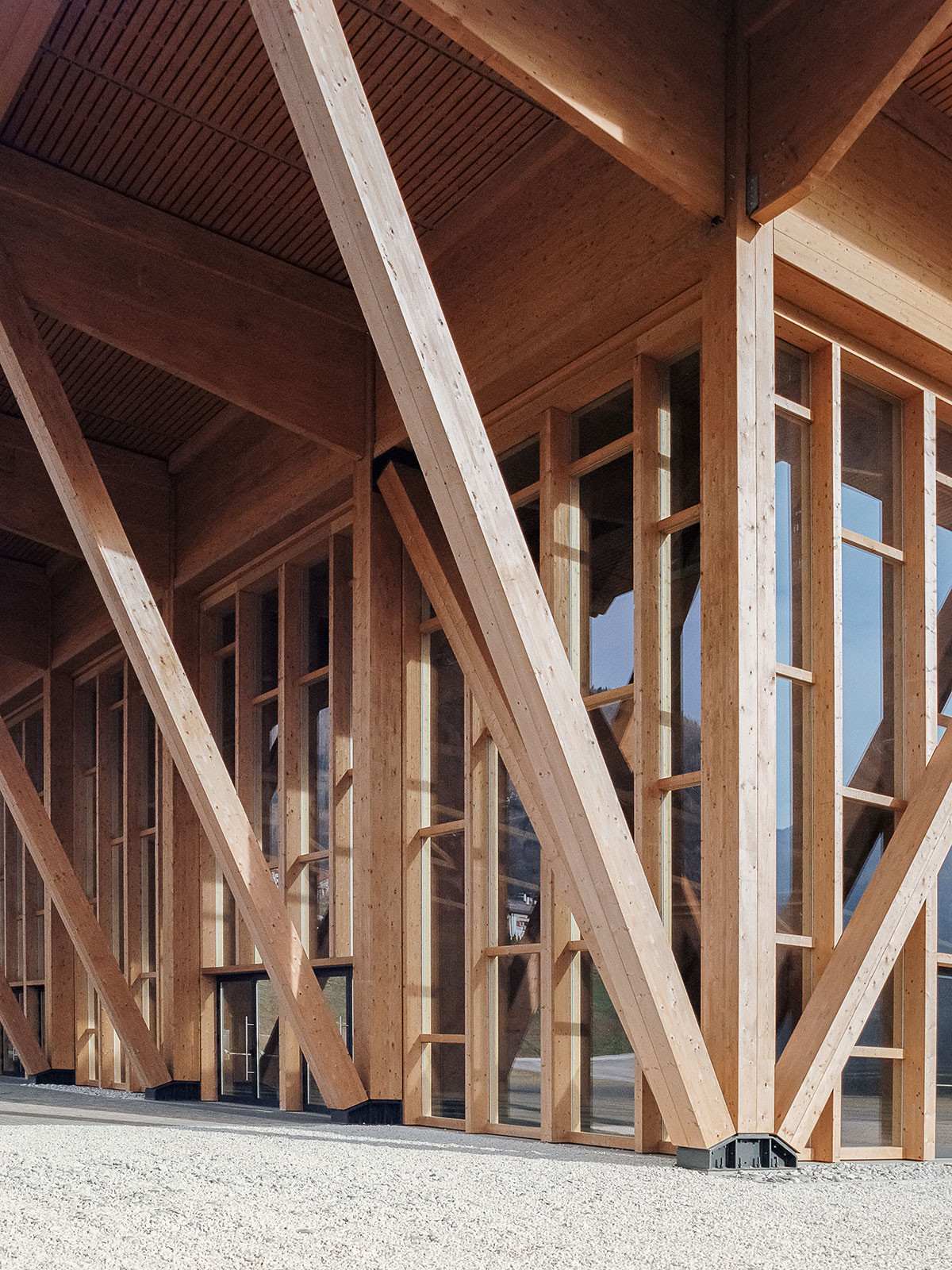
The structural grid is the project`s leading factor and defines the interiors: a lightweight construction, easily recognizable by the shape of the roof, the very distinctive feature of the building.
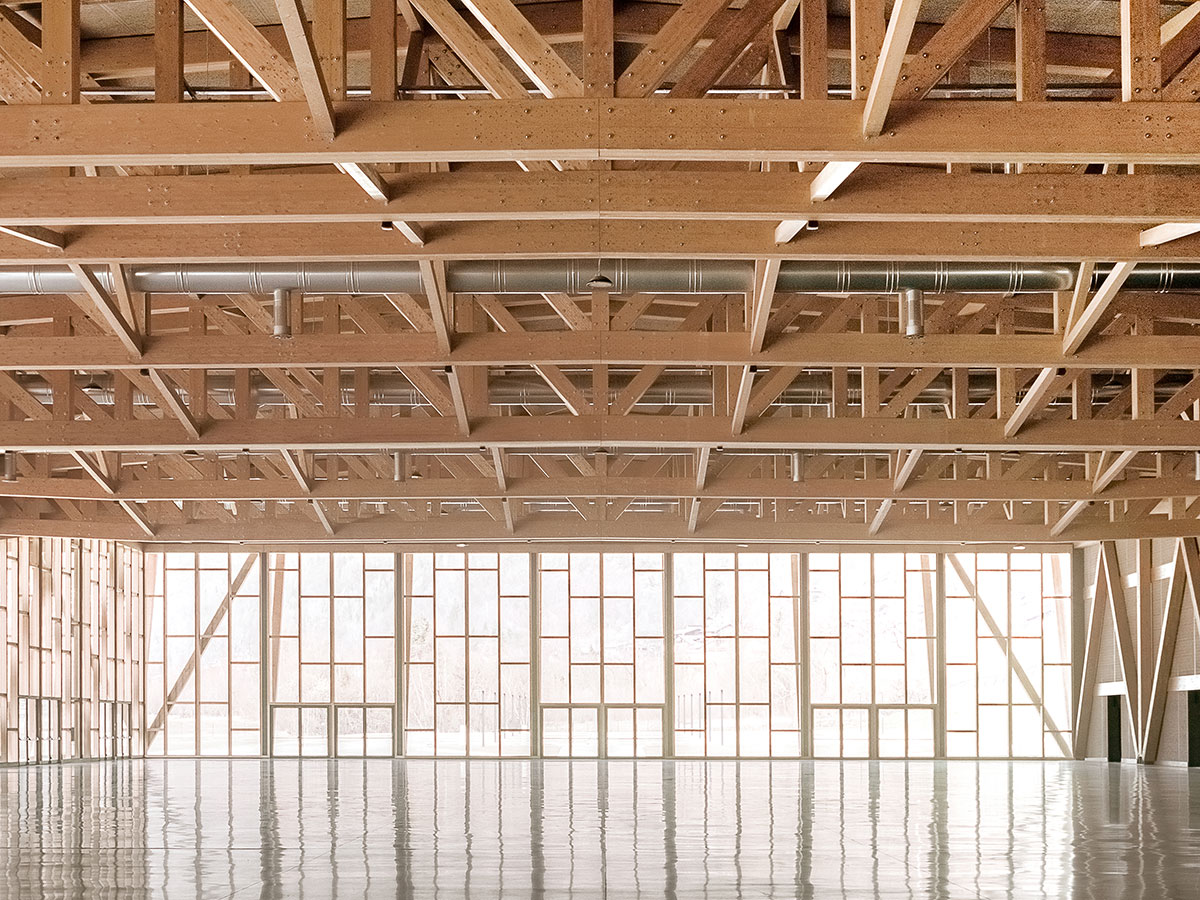
The structure of the building is made of glued laminated timber. This includes pillars, roof beams and bracings. The foundation constitutes, a series of concrete plinths interconnected by a concrete raft. The static scheme is configured as a series of parallel isostatic frames, braced by diagonal elements on the long sides, and by external struts/tie rods between the pillars and the concrete containment wall on the east side.
